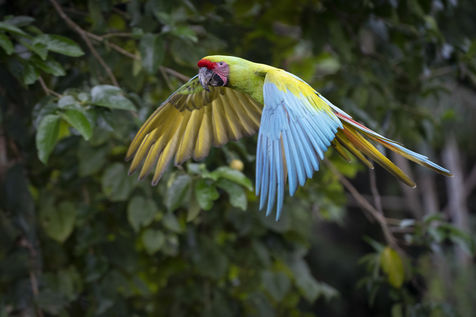Pour accéder à la série en entier, vous devez vous logger ou demander un compte Hans Lucas en cliquant ici.
Costa Rica - Protection des grands Ara vert
Les Grands Ara vert sont en danger, ils ont de moins en moins de forêt tropicale pour vivre mais surtout de moins en moins de leur arbre préféré : l'amandier des montagnes (Dipteryx oleifera). Les planches et les poutres de ce bois ont été très utilisé au Costa Rica pour la construction jusqu'en 2008, date où le gouvernement l'a classé comme arbre protégé.
Le Grand Ara vert se nourrit des amandes de cet arbre mais c'est aussi dans celui-ci qu'il cherche des cavités pour y faire son nid et pondre ses oeufs. Devant la raréfaction de ces arbres l'association Ara Manzanillo a décidé de construire des nids et de les installer dans une forêt protégée au sud du Costa Rica.
Les nids artificiels sont installés en hauteur, à un minimum de 25 mètres. Les bébés aras restent un mois dans l'oeuf avant d'éclore puis resteront dans le nid 17 semaines avant de prendre leur envol. Durant cette période, les membres de l'association, monte régulièrement dans les nids afin de vérifier que les bébés grandissent correctement.
Costa Rica - Ara Manzanillo Project NGO
The Great Green Macaws are in danger, they have less and less tropical forest to live in but also less and less of their favorite tree: the mountain almond tree (Dipteryx oleifera). Planks and beams of this wood were widely used in Costa Rica for construction until 2008, when the government classified it as a protected tree.
The Great Green Macaw feeds on the almonds of this tree but it is also in this one that it looks for cavities to build its nest and lay its eggs. Faced with the scarcity of these trees, the Ara Manzanillo association decided to build nests and install them in a protected forest in southern Costa Rica.
The artificial nests are installed in height, at a minimum of 25 meters. Baby macaws stay in the egg for a month before hatching and then stay in the nest for 17 weeks before taking flight. During this period, the members of the association regularly climb into the nests to check that the babies are growing correctly.









